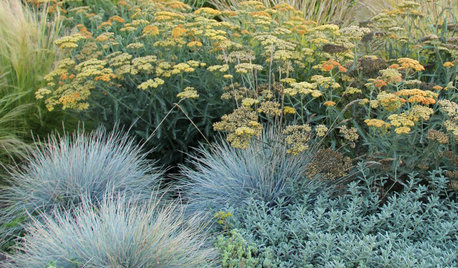Let's talk about ashes
pbl_ge
12 years ago
Related Stories

PRODUCT PICKSGuest Picks: Let’s Talk Tubs
Find just the right bathtub no matter how you like to soak
Full Story
GREEN BUILDINGLet’s Clear Up Some Confusion About Solar Panels
Different panel types do different things. If you want solar energy for your home, get the basics here first
Full Story
DECORATING GUIDESExpert Talk: Designers Open Up About Closet Doors
Closet doors are often an afterthought, but these pros show how they can enrich a home's interior design
Full Story
FURNITUREDesign Talk: What is a Settee?
See This Elegant Seating Solution in Dining Room, Office, Entry and Bedroom
Full Story
HEALTHY HOMEWhat You Need to Know About Dust and How to Fight It
Breathe easier with these 10 tips for busting mites, dander and other microscopic undesirables
Full Story
MATERIALSInsulation Basics: What to Know About Spray Foam
Learn what exactly spray foam is, the pros and cons of using it and why you shouldn’t mess around with installation
Full Story
DINING ROOMSExpert Talk: Treat the Eyes to Dining Room Wallpaper
For a visual feast and plentiful servings of style in the dining room, pro designers show how wallpaper fits the bill
Full Story
REMODELING GUIDESHave a Design Dilemma? Talk Amongst Yourselves
Solve challenges by getting feedback from Houzz’s community of design lovers and professionals. Here’s how
Full Story
FUN HOUZZHouzz Call: Tell Us About Your Dream House
Let your home fantasy loose — the sky's the limit, and we want to hear all about it
Full Story
LANDSCAPE DESIGNTexture Talk: 4 Foliage Types for Distinctive Gardens
Contrast these leaf textures for plants that stand out and a landscape that draws you in
Full Story







jean001a
jean001a
Related Professionals
West Milford Landscape Architects & Landscape Designers · Beachwood Landscape Contractors · Fair Oaks Landscape Contractors · Framingham Landscape Contractors · Lemoore Landscape Contractors · Mastic Beach Landscape Contractors · New Cassel Landscape Contractors · North Lauderdale Landscape Contractors · Tewksbury Landscape Contractors · Markham Landscape Contractors · North Hills Landscape Contractors · Pittsburgh Decks, Patios & Outdoor Enclosures · Richmond Decks, Patios & Outdoor Enclosures · Troy Decks, Patios & Outdoor Enclosures · Pleasant Grove Decks, Patios & Outdoor EnclosuresKimmsr
albert_135 39.17°N 119.76°W 4695ft.
myluck
rosiew
jaco42
myluck
gonebananas_gw
Kimmsr
gonebananas_gw
Kimmsr
david52 Zone 6
dicot
gonebananas_gw
zhoen